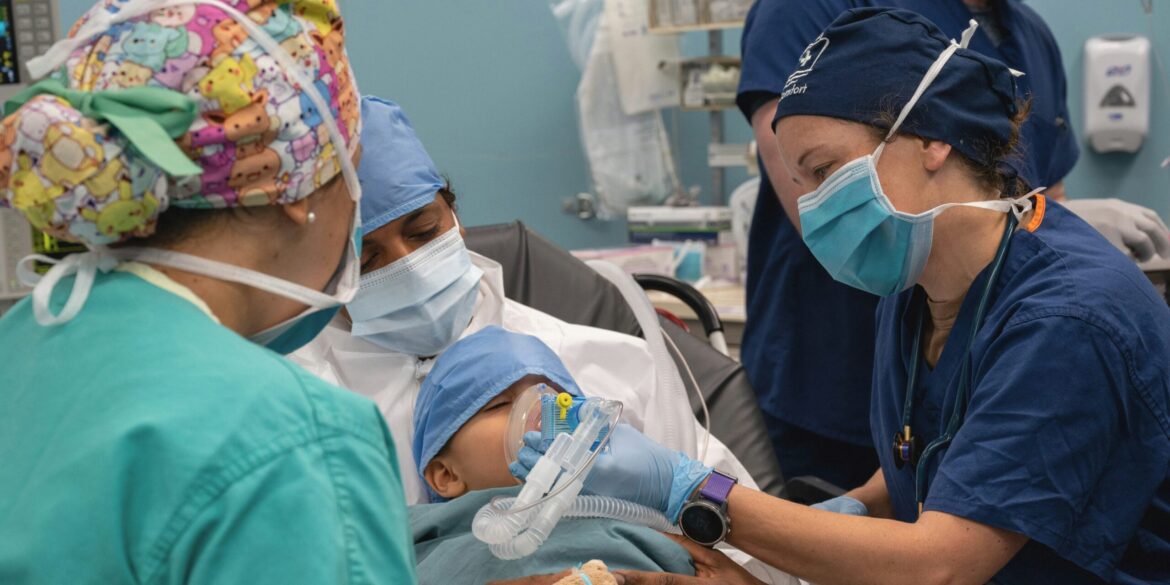On October 16, the world commemorates World Anaesthesia Day, a significant occasion that marks the anniversary of the first successful use of ether anaesthesia in 1846. This pivotal moment in medical history occurred at Massachusetts General Hospital in Boston, where dentist William T.G. Morton demonstrated ether as an effective anaesthetic for surgery, revolutionizing the way surgeries were performed and forever changing the landscape of modern medicine.
Before the advent of anaesthesia, surgeries were incredibly painful experiences, often performed without any pain relief. Patients undergoing operations faced intense physical suffering, and many were reluctant to undergo necessary procedures due to the fear of pain. The introduction of ether anaesthesia, which allowed patients to undergo surgeries without experiencing the agony that had previously been a given, marked a turning point in medical history. For the first time, the focus of surgery shifted from enduring pain to ensuring patient comfort and safety during procedures.
The success of Morton’s experiment with ether in 1846 proved to be one of the most important medical breakthroughs of the 19th century. Not only did it provide immediate relief to patients, but it also made it possible for surgeons to perform more complex, prolonged, and intricate surgeries that would have been unthinkable without anaesthesia. This advancement fundamentally changed the practice of surgery, as it allowed physicians to expand their capabilities and perform procedures with greater precision and less risk.
Nearly 180 years after that landmark moment, World Anaesthesia Day continues to honor the essential role that anaesthesia plays in healthcare today. Modern anaesthesia, in its many forms, is integral to virtually every type of surgery and medical procedure, from simple dental work to the most advanced organ transplants. The day is a reminder not only of the historical significance of Morton’s achievement but also of the ongoing advancements in the field, which continue to evolve in ways that enhance patient care and improve surgical outcomes.
Read Also: https://primetimepress.com/medical-robots-poised-to-transform-healthcare-delivery/
Anaesthesia has come a long way since its humble beginnings. Today, a wide array of anaesthetic agents is available, each designed for different types of procedures, patient needs, and levels of pain. From local anaesthesia, used for minor surgeries and procedures, to general anaesthesia, which induces a controlled state of unconsciousness for more invasive operations, anaesthesia is tailored to provide the most effective and safe outcomes for patients. Additionally, techniques such as regional anaesthesia, where specific areas of the body are numbed, have become common practice for a variety of surgeries, including those in obstetrics, orthopaedics, and pain management.
The role of the anaesthesiologist has expanded beyond simply administering anaesthesia. Modern anaesthesiologists are highly skilled specialists who monitor patients’ vital signs and manage their overall wellbeing during surgery. They are responsible for ensuring that patients remain stable, comfortable, and safe throughout the entire surgical process, from induction to recovery. Their expertise extends beyond anaesthesia administration to include pain management and critical care, making them integral members of surgical teams.
World Anaesthesia Day also offers an opportunity to reflect on the progress made in anaesthesia research. Over the years, significant advancements have been made in improving the safety, effectiveness, and precision of anaesthesia. With the introduction of new medications, advanced monitoring technology, and better understanding of pharmacology, anaesthesia practices continue to evolve. Researchers in the field are constantly exploring new ways to minimize risks, improve recovery times, and enhance patient comfort.
The observance of World Anaesthesia Day is not only about celebrating the achievements of the past but also acknowledging the work that continues to shape the future of the field. The development of regional anaesthesia techniques, advances in sedation practices, and innovations in pain relief are just a few of the many areas where progress continues to be made. The ongoing research in anaesthesia, along with the development of better training for anaesthesiologists, plays a critical role in improving the quality of care for patients worldwide.
As the field of anaesthesia continues to evolve, the importance of its role in medicine cannot be overstated. It is a field that touches nearly every aspect of healthcare, from the smallest outpatient procedures to the most complex surgeries. By commemorating World Anaesthesia Day, the global healthcare community takes a moment to honor the advancements in anaesthesia and the professionals who contribute to making modern surgery safer and more effective.
In summary, World Anaesthesia Day serves as both a celebration of a groundbreaking medical achievement and a reminder of the continuous evolution of the field. From its first use of ether in 1846 to the sophisticated techniques employed today, anaesthesia has not only transformed surgery but also played a vital role in improving the quality of life for countless patients around the world. As we mark nearly two centuries since that first demonstration, we are reminded of the profound impact that one moment in medical history has had on the world of healthcare, and how it continues to shape the future of medicine.

